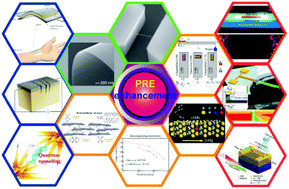Advances in ultrasensitive piezoresistive sensors: from conventional to flexible and stretchable applications
Abstract
The piezoresistive effect has been a dominant mechanical sensing principle that has been widely employed in a range of sensing applications. This transducing concept still receives great attention because of the huge demand for developing small, low-cost, and high-performance sensing devices. Many researchers have extensively explored new methods to enhance the piezoresistive effect and to make sensors more and more sensitive. Many interesting phenomena and mechanisms to enhance the sensitivity have been discovered. Numerous review papers on the piezoresistive effect have been published; however, there is no comprehensive review article that thoroughly analyses methods and approaches to enhance the piezoresistive effect. This paper comprehensively reviews and presents all the advanced enhancement methods ranging from the quantum physical effect and new materials to nanoscopic and macroscopic structures, and from conventional rigid to flexible, stretchable and wearable applications. In addition, the paper summarises results recently achieved on applying the above-mentioned innovative sensing enhancement techniques in making extremely sensitive piezoresistive transducers.

- This article is part of the themed collections: Materials Horizons 10th anniversary regional spotlight collection: Asia-Pacific and Recent Review Articles


 Please wait while we load your content...
Please wait while we load your content...